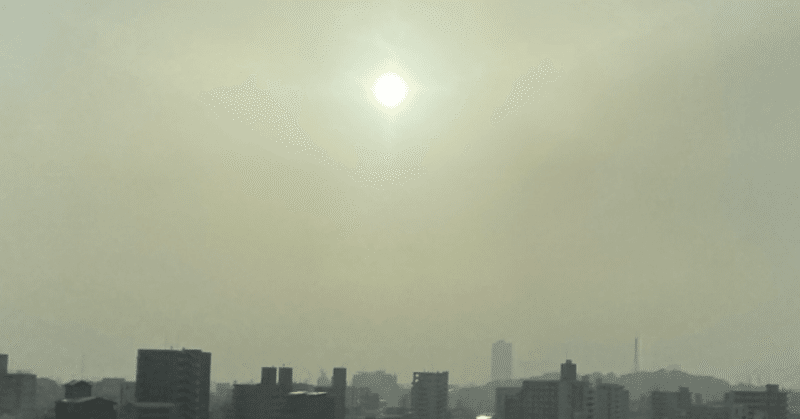
【Koyomi】 April 18, 2024
Various Things About the Seasons|Yellow dust
季節のあれこれ|黄砂
Today, the haze from the yellow dust was so severe that even the mountains appeared blurred.
今日は黄砂が酷くて山も霞んで見えました
Understanding Yellow Dust Phenomenon
Yellow dust, also known as Asian dust, originates from desert areas such as the Gobi and Taklamakan deserts in East Asia. It is lifted by strong winds and transported across great distances by upper-level air currents. This dust is not just a local phenomenon but can travel thousands of kilometers, affecting multiple countries in its path.
黄砂現象を理解する
黄砂、別名アジアンダストは、東アジアの砂漠地帯(ゴビ砂漠、タクラマカン砂漠など)から発生します。これは強風により持ち上げられ、上空の気流に乗って長距離を移動し、多くの国々に影響を与えます。
The Seasonal Impact of Yellow Dust
In Japan, the presence of yellow dust is felt almost year-round, but its effects intensify from February, peaking between March and May. During these months, the dust significantly affects daily activities, covering outdoor items with a fine layer and reducing visibility, which can impact transportation.
黄砂の季節的影響
日本では黄砂の影響はほぼ年間を通じて感じられますが、特に2月から影響が強まり、3月から5月にかけてピークを迎えます。この期間中、黄砂は日常活動に大きな影響を与え、屋外の物を細かな層で覆い、視程を低下させ、交通に影響を与えることがあります。
Practical Tips for Dealing with Yellow Dust
To mitigate the effects of yellow dust, it is advisable to keep windows closed on windy days and to use air purifiers indoors. Covering cars and drying laundry inside during peak dust season can also prevent unnecessary cleaning and exposure.
黄砂対策の実用的なヒント
黄砂の影響を軽減するためには、風の強い日は窓を閉めて室内で空気清浄機を使用することをお勧めします。また、黄砂の多い季節には車をカバーすることや室内で洗濯物を干すことで、不要な掃除や曝露を防ぐことができます。
この記事が気に入ったらサポートをしてみませんか?
